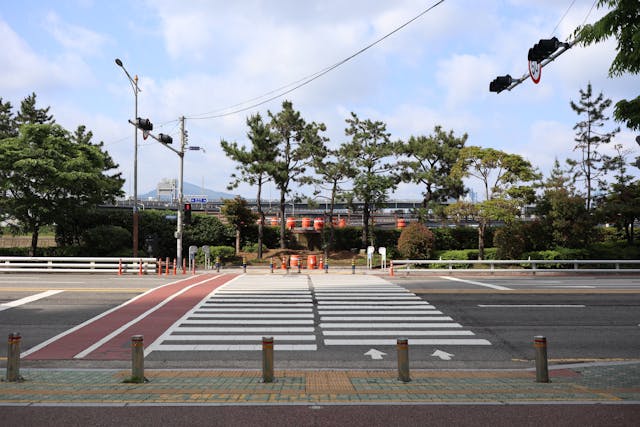In recent years, cities across the globe have begun exploring more sustainable transportation options due to major issues like air pollution, traffic congestion, and climate change. A range of strategies and initiatives are being used to reduce the environmental impact of transportation while improving accessibility and efficiency.
Promoting walking and cycling and investing in public transit infrastructure are among the most effective ways to make urban transportation more sustainable. Prioritizing these modes of transportation can help minimize carbon emissions and mitigate the harmful effects of traditional transportation systems. Let’s explore how cities can be transformed to become more walkable and bikeable, and the benefits of such transformations.
The Benefits of Walkable and Bikeable Cities
Prioritizing walkable and bikeable urban environments can improve the physical and mental health of residents, help mitigate environmental degradation, and make communities more vibrant.
Walkable and bikeable cities promote healthier lifestyles by encouraging residents to choose active modes of transportation. Walking, cycling, and other physical activities have been linked to numerous health benefits, such as reduced risks of cardiovascular diseases and mental health disorders.
Walkable and bikeable communities are also less reliant on automobiles, which decreases exposure to harmful air pollutants and traffic accidents. This improves both air quality and public safety, as residents can move freely without fear of pollution or accidents. Overall, prioritizing walkability and bikeability in urban planning initiatives helps improve public health and community well-being.
Traffic congestion and its environmental consequences are among the most pressing challenges faced by modern cities. Walkable and bikeable cities offer solutions to these problems by providing alternative modes of transportation, rather than forcing residents to rely on automobiles. As more people opt to walk or cycle, the strain on existing road infrastructure decreases. This leads to reduced traffic congestion and smoother traffic flow, improving the transportation experience even for those people who choose to drive personal vehicles.
Walkable and bikeable neighborhoods often have more vibrant local economies and thriving social scenes. Pedestrian-friendly infrastructure and mixed-use developments can be used to create environments where residents can easily access essential services, amenities, and recreational opportunities within walking or cycling distance. This helps foster a sense of community and belonging, as residents are encouraged to support local businesses and participate in social activities in their neighborhoods.
Investing in walkability and bikeability helps strengthen social bonds and improves the overall quality of urban life. As pedestrians and cyclists navigate shared public spaces, they have plenty of opportunities for spontaneous encounters and meaningful interactions with their neighbors.
Key Principles of Walkable Urban Design
The key principles of sustainable urban planning serve as guiding frameworks for designing cities that prioritize pedestrian and cyclist mobility.
Pedestrian-Friendly Infrastructure and Amenities. When designing a walkable city, pedestrian-friendly infrastructure and urban amenities must be prioritized. This includes the presence of well-maintained sidewalks, clearly marked crosswalks, and pedestrian-friendly intersections to improve safety and accessibility for pedestrians.
Cities should also provide accessible parks, recreational facilities, and other public spaces to encourage outdoor activity and social interaction. Investing in these amenities allows urban planners to build environments that promote physical activity, social engagement, and well-being among residents.
Mixed Land Use and Density. Embracing mixed land use and density is another key aspect of walkable urban design. This involves consolidating residential, commercial, and recreational spaces within proximity to one another to minimize the need for long-distance travel.
Compact and mixed-use developments help reduce urban sprawl, preserve green spaces, and make communities more livable and self-sufficient. Cities can use diverse land uses and higher population densities to create dynamic environments where residents can live, work, and play conveniently and sustainably.
Safe and Connected Cycling Infrastructure. In addition to pedestrian-friendly amenities, cities should prioritize the development of safe and connected cycling infrastructure. This includes designated bike lanes, paths, and shared roadways to accommodate cyclists of all skill levels.
Implementing bike-sharing programs and offering incentives for cycling commuters can further promote cycling as a viable daily transportation option. Investing in cycling infrastructure allows cities to reduce traffic congestion, improve air quality, and improve overall mobility options for residents.
Overcoming Challenges in Sustainable Transportation
Infrastructure limitations are among the main hurdles to advancing sustainable transportation. Many cities lack the necessary infrastructure to support sustainable modes of travel or are to spread out for these modes of travel to be feasible. To overcome this challenge, governments and urban planners must prioritize investments in infrastructure projects that support alternative modes of travel, such as bike lane networks, better sidewalk connectivity, and easier access to public transportation.
Changing travel behavior and cultural norms is another significant challenge. Many individuals are accustomed to relying on personal vehicles due to convenience and societal norms. Encouraging people to shift toward sustainable modes of travel requires education and outreach campaigns highlighting the benefits of these alternatives.

